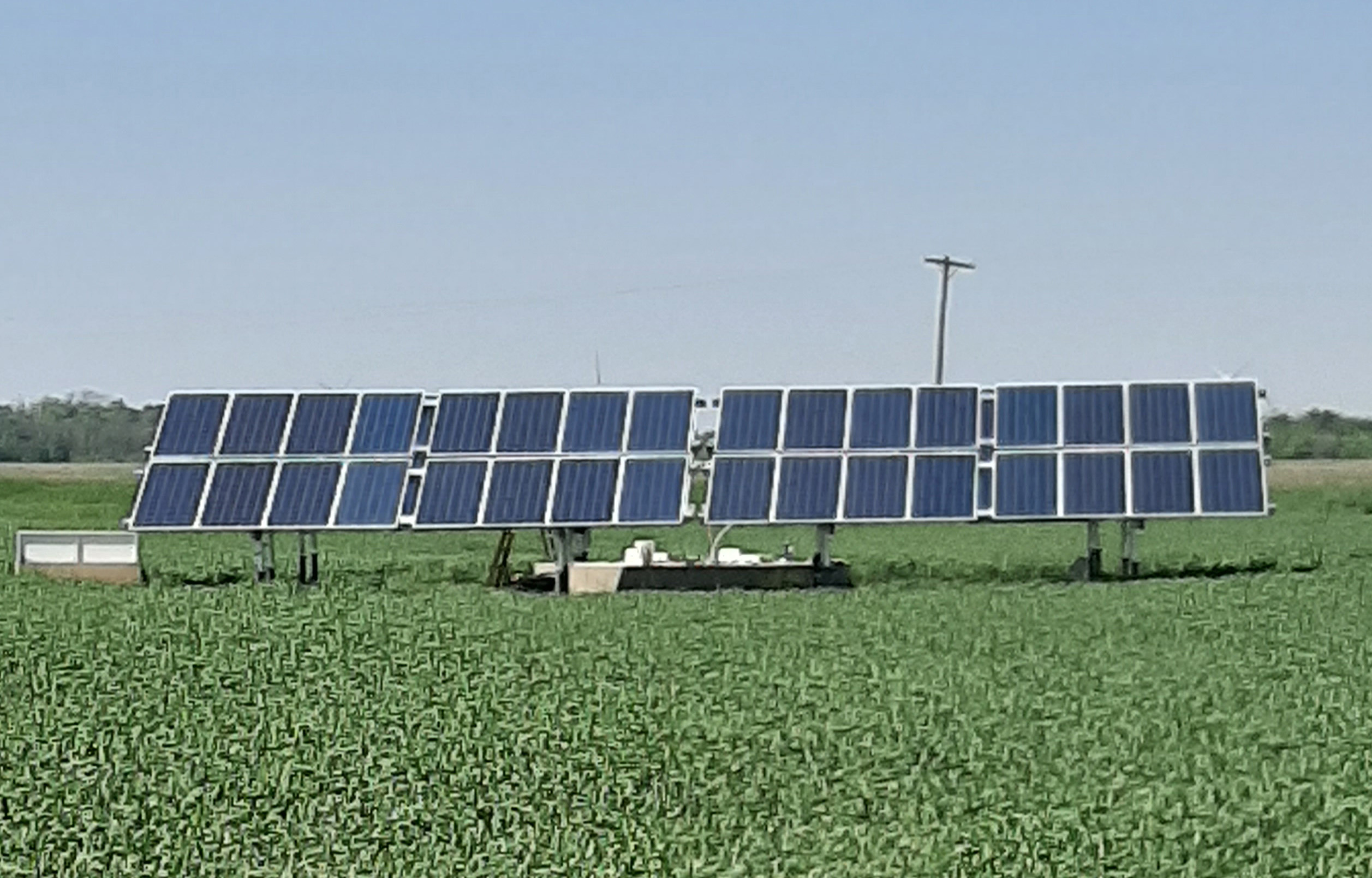Having trouble deciding which solar racking solution to go with? You’ve come to the right place.
Polar Racking recently hosted a webinar with their distributor Frankensolar Americas on how to select the best, small, pre-engineered, fixed ground-mount racking system. They reviewed Polar Racking’s PRU-D, an ideal turn-key solution for anyone looking to install a solar energy system on their small residential or commercial property.
Why go with ground-mount?
Over the last couple years, the demand for fixed ground-mount systems has increased. Part of the reason is because more people are realizing the financial benefits of installing a simple, easy-to-install solar system right in their backyard. These systems cause significantly less damage to property (as there is no rooftop penetration) and are very cost competitive. Polar Racking is able to keep their products at an affordable price because they made high-impact standardization decisions.
Why fixed and not custom racking?
The more customization of your racking, the dramatically higher the prices. With that in mind, Polar Racking prioritized smart standardization when designing this ground-mount solar racking for small residential and commercial properties. As a result, the PRU-D product is both affordable and rugged. It has a 2 by 8 rack at 35 degrees – the ideal setting for over 99% of Canada, and most of the United States. Internal research by Polar Racking and Frankensolar also found that making the PRU-D seasonally adjustable had no significant effect on the production value and simply raises the costs of production, which in turn causes the price to increase.
Watch the full recording of the webinar below for free, or scroll down to read a short transcript of the Q&A at the end of the webinar. We address the most common questions from installers and distributors, so you can select the best, fixed ground-mount racking system for your needs.
Time (via YouTube video) – 48:19
All questions were asked live via the chat function in the online webinar. The transcript has been edited slightly to highlight these questions.
Danny Mueller: How would a concrete ballast work?
Vishal Lala: Okay so, that is a good question. We do have ballast hubs that we can provide to you. Now, the amount of ballast is very site specific, so it takes a bit of engineering time. You would provide us with the location and the configuration of the array or the site layout, and based on that we would specify the amount of ballast that you would need per foot and provide you with an engineered drawing to that effect. And, obviously, we have the ballast hubs in stock here that we would supply for you.
Danny Mueller: Is there a solution that we have currently for connecting the individual racks together?
Vishal Lala: Currently, no. You can build them side by side, but the beauty of the PRU-D rack is that it’s all designed for worst case scenarios so just making sure that you leave enough gap so that when it’s windy so that one rack or two panels are not going to hit each other. What do you think Keith?
Keith Roy: So normally with our PRU you have be between 8 to 2 inches. With this system, the advantage is that you can be anything more than 2 to 3 inches, to 30 feet. So especially when you’re doing your first couple systems, I suggest giving yourself a foot green tables that way if you have any transitions problems or things don’t go exactly as planned, you can have a smooth edge just with larger spacing between your tables. Again, the system can handle it, it‘s just an aesthetic issue that you’ll probably end up with better aesthetic if you give yourself a gap then if you put everything 2 inches apart.
Vishal Lala: What is the price of the 2 by 8 kit as presented today?
So, that is something you can contact Frankensolar about and they will be able to tell you their price list.
Danny Mueller: Yes absolutely, anyone that doesn’t have our price list feel free to reach out to sales@frankensolar.ca that comes to me and I will be very happy to share the price list with you and other questions of course too. My personal email is also danny.mueller@frankensolar.ca so you can also send stuff there, but sales is just a little bit easier.
Vishal Lala: Is this fixed rack fixed at 30 degrees?
It is fixed at 30 degrees, the engineering is all done at 30 degrees but you can go to 35 degrees, it is built into the system however at that point we would have to look at your loads and confirm, but ideally you’re building everything at 30 degrees.
Danny Mueller: Yeah we get that a lot, people asking for 35 to 40 degrees for the ground-mount and we’ve looked at the numbers in terms of extra production and there’s certainly some extra production there, but there’s also downsides that comes with it – there’s higher loads on the rack, then if we had to do custom everything the cost would go up drastically as well as the lead time would go up drastically. So we’ve standardized at around 30 degrees because It’s easy and very cost competitive.
Vishal Lala: Can you talk briefly about the 20-year warranty?
The PRU-D is generally for residential and small options so that’s why the warranty is for 10 years, but for the PRU – our larger system – the warranty is 20 years.
Vishal Lala: Driven pile option with five-inch pile or single post option?
The stock for the PRU-D is not set up for the single post option, it can be modified (I hate to say that out loud) but again we are customizing a product that should just be off the shelf. For PRU systems that are larger we can offer single post, dual post, ballasted screws, ground screws, helical piles – we have all of the options available to us.
Danny Mueller: What is the adjustability of the PRU-D?
I know there are some solutions out there that are seasonally adjustable and this is not, and the main reason is we’ve looked at those numbers as well as the extra production that you get from it, and it is not significant. Usually you’re looking at significant cost increases on all the seasonally adjustable racks, so we don’t offer a solution that is seasonally adjustable just because it generally doesn’t make financial sense. Also, what we’ve seen a lot in people who have seasonally adjustable racks is that they do it the first few years and then they just stop doing it.
Vishal Lala: What is the PRU-D made of?
It’s all G90 galvanized material with magni-coated fasteners.
Vishal Lala: Maximum wind speeds that the rack can handle?
That also is in your individual package per province, but 0.63 kpa is the wind pressure and it’s designed for 50 psf of snow. So, you can basically use this rack all over Ontario. In Alberta, there’s two small areas which again when you get your package you’ll see them on the map, it’s basically the Pincher creek area where the winds are exceptionally high, but again for 99% of the province, it works. So, again it’s a little bit different for each province, but it should work in 99% of Canada.
Vishal Lala: Can you provide cable trays and support for the inverters?
So generally, it really depends on the size of the inverter and the loads, but we can definitely take a look at that. Sometimes we build a little unit structure off the back of one of the legs to mount your inverter. If you’re talking about microinverter, you can attach it directly to one of the beams or a microinverter optimizer.
Vishal Lala: Can changes be made to adjust for higher wind speeds, such as 140 km an hour?
So, we would have to look at that on a site-by-site basis and let you know, but we’d be happy to do that.
We hope this short article helped you decide why a fixed, pre-engineered ground-mount solar racking system is the most cost-efficient and stress-free solar option on the market.
If you would like to learn more about Polar Racking and the products they sell, please visit polarracking.com or email info@polarracking.com.
Follow Polar Racking on Facebook, Twitter, and LinkedIn for updates and deals!



